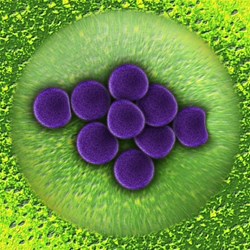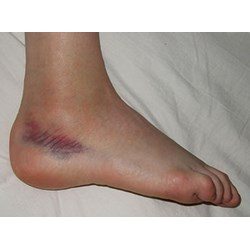Bone Marrow and Cord Blood Donation
Information in regards to bone marrow and cord blood donation transplantation treatment options starts with a diagnosis of a serious illness. It is helpful to understand the disease and what treatment options you can plan with your doctor.
Knowing when your doctor will consider a transplant as well as treatable diseases with the cells used begins with replacing disease blood forming cells such as in the case of leukemias and lymphomas, multiple myeloma or plasma cell disorders.
In the case of leukemia treatment options the two major types include acute and chronic formed by the malignant cells. Myelodysplatic syndrome, comes from low blood cell counts or may involve lymphocytes which is chronic leukemia affecting the myeloid cells in the bone marrow.
These cells need to be restored after chemotherapy and radiation therapy to prevent the disease from affecting the skin, liver and other organs.
Image Pixabay
Cell Transplantation Program
The U.S. Department of Health and Human Services provides the C. W. Bill Young Cell transplantation program to support patients and families with one on one with patient service coordinators.
The educational presentations is free and provides for those involved in the patient financial and insurance matters in the place of the advocacy.
Doctors and scientist must work together to collect and analyze data as well as research studies to improve on the procedures used to help patients live longer and healthier lives before a
bone marrow or chord blood transplant donor or match can be found.
Reading reports about patient outcomes is the first step to understanding the number of transplants performed.
Image: Pixabay
Types of Cells Used Overview
Many transplants can be used by using cells from your own body, the procedure infuses stem cells and this works with certain types of cancer of leukemia or sickle cell anemia.
A blood disease may require autologous or allogeneic which requires a donor if one is unable to use healthy cells from the body after chemotherapy that is required for certain patients who need donor cells to diminish cancerous malignant cells before a high dose myeloablative.
Autologous transplant is the other type of cord blood transplants which is a treatment option for disease. Immune system and genetic disorders need cells for the process so finding a match from a relative or donor is important.
Use of the umbilical cord after a baby is born replaces unhealthy blood forming cells or peripheral blood stem cells are an option along with bone marrow. Your doctor will decide which is the best for your specific situation.

Blood Forming Cells Restoration
The HLA tissue type or human leukocyte antigen must match your immune system so that is why it is best to consider a brother or sister for a donor since the HLA tissues are inherited. The preparative regimen is an aggressive treatment process to destroy the bad cells and help the body accept the donated cells.
A vein in the chest is infused with a tube to receive the blood forming cells with a catheter . the spaces inside your bones create new marrow and red blood cells along with white blood cells also known as platelets.
The functions of each blood cell is to help your body with oxygen, fighting infection as well as control bleeding. Engraftment allows the transplanted cells to grow and make new blood cells.
it is best to discuss these options with your doctor when considering a bone marrow or stem cell transplant option while evaluating your health.
Image Pixabay

What are the Types of Stem Cell Transplantations?
Doctors can provide a variety of bone marrow transplant options depending on who the donors are.
Those who provide blood stem cells such as a genetically matched family member an HLA match can be done from blood samples. This process is called a allogeneic transplant.
If the blood stem cells are donated from a non-family member but instead comes from a worldwide donor registry it is called a matched unrelated transplant.
As for in the case that the donor is a identical twin it would require a syngeneic transplant.
It is now common for patients to donate their own stem blood cells prior to treatment so that it can be used for infusion later.
The two types of stem cell harvesting includes:
1. Bone marrow stem cell harvesting
2. Peripheral blood stem cell harvesting called apheresis.
As for stem cell infusion transplantation they are provided for patients who have undergone chemotherapy treatments. Most cancer therapy treatments will have a negative effect on the bodies ability to produce blood cells.
So high doses of chemotherapy requires the use of a transfusion from bone marrow stem cells to introduce red blood cells, white blood cells and platelets into the body that is collected from a donor or the patient prior to treatment.


Stem Cell Supplement – 3 Pack Deal – Intraoral Application for 95% Absorption Rate – Pure, Natural Ingredients, Scientifically Proven

What Types of Treatment for Bone Marrow Cancer ?
Treatment is based on the type of bone cancer an individual is diagnosed with, also the location of the disease will determine if surrounding tissues have been infected. Mild cancer is treated differently than aggressive cancer.
Top ways doctors treat bone cancer include:
Surgery
Chemotherapy
Radiation Therapy
In surgery the bone is removed that has the tumor to avoid further spreading and growth. Doctors will test the blood and white cells of the bone to help keep the symptoms from recurrence.
Bone replacement will occur to eliminate the need for amputation during surgery depending on the amount of the bone removed the area can be replaced with bone cement or bone graft. For larger areas on the body it may require grafting with the use of the bone bank or metal implants.
Other types of treatment that does not require surgery would be the use of a oncologist who practices chemotherapy by using various medications to stop the growth of cancer cells. The goal is to shrink the bone tumor or kill the remaining cancer cells.
Lastly, high energy x-rays used by radiation oncologists who does the treatment in small doses over a weekly or monthly basis to help eliminate cancer cells from the bone structure in many cases used before or after surgery.
Disclaimer: This is not intended to give medical advice and is for informational purposes only, it is recommended you consult a licensed practicing physician before you undergo any medical procedures.
Image Pixabay
Related Posts
-
Bone Marrow Treatment OptionsWhen it comes to comprehensive health test many find that it is…
-
Breaks And SprainsBreaks and sprains, I've had them both. Neither of which is very much…
-
Your MouthMost everyone knows by now that your mouth is the beginning of your digestive…








